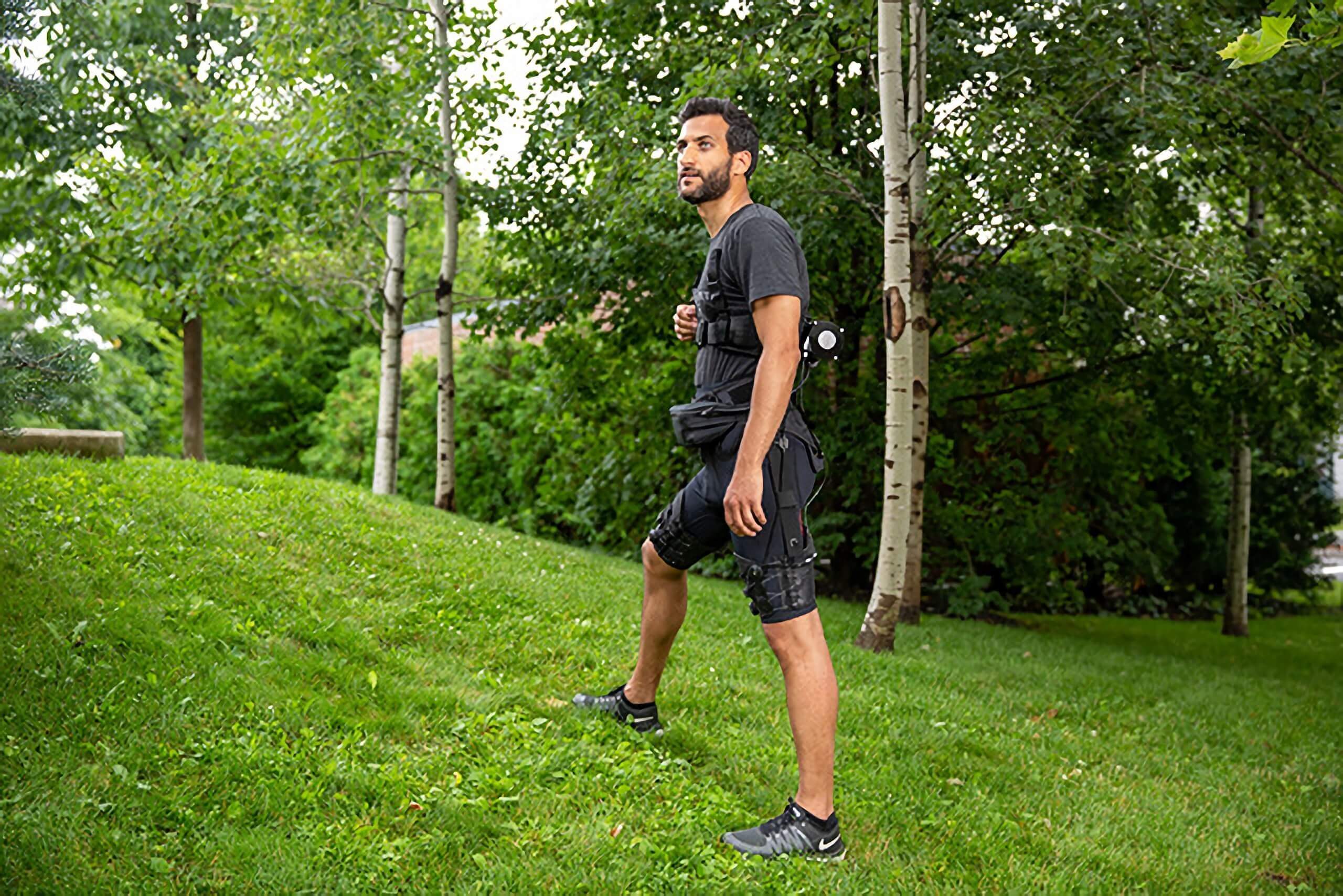Forward-looking: Mechanical exosuits are relatively new technology. As such, they tend to be heavy and bulky. What if you could put on an exosuit that was not much more than a pair of shorts and a small backpack? The time is coming, maybe even sooner than we thought.
Engineers from Harvard University and the University of Nebraska have developed an ultra-portable exosuit that can assist the wearer while walking and running. Artificial intelligence can adjust the actuator to the user's gait. It does not matter who is wearing the device, the algorithms will figure out the proper adjustments.
Weighing in at just 5kg, the device works with the wearer's gluteal muscles to increase the torque delivered by the hip joint. Depending on whether the person is walking or running, the onboard microprocessors will adjust the assistance properly to account for the precise muscle movements required for either activity (inverted-pendulum while walking or spring-mass motion while running).
According to the team's paper published in Science, early testing of the exosuit reduced the wearer's metabolic rate by nine percent while walking and by four percent when running. A previous design offered a 17.4-percent reduction in metabolic expenditure, but could only aid in walking.
Harvard's School of Engineering and Applied Sciences notes the device has definite rehabilitation potential. However, the researchers have hopes to see it applied in other areas such as industrial work or even recreational activities such as hiking mountain trails.

"It is very satisfying to see how far our approach has come," said Conor Walsh engineering professor and founder of Harvard's Biodesign Lab. "We are excited to continue to apply it to a range of applications, including assisting those with gait impairments, industry workers at risk of injury performing physically strenuous tasks, or recreational weekend warriors."
Despite having commercial potential, the researchers did not mention commercialization plans other than the possible applications.
Image credit: Wyss Institute at Harvard University
